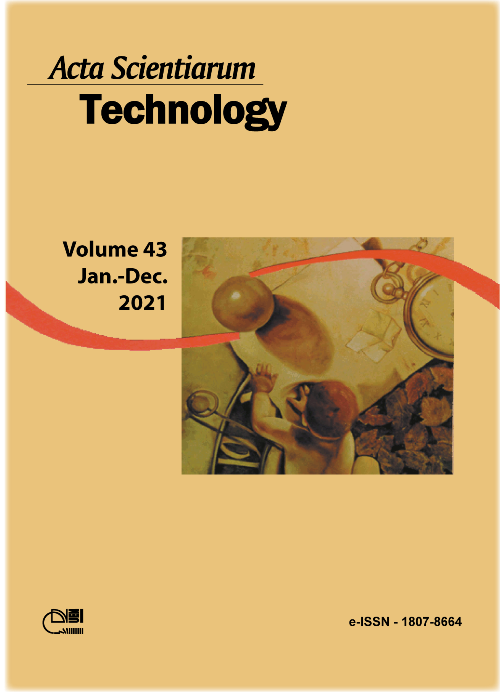Sulfated agaran with 4,6-pyruvated form from red seaweed Acanthophora muscoides attenuates thrombin formation: in vitro and ex vivo studies
DOI:
https://doi.org/10.4025/actascitechnol.v43i1.55043Keywords:
sulfated polysaccharide; chemical analysis; alternative system; clot formationAbstract
In vitro studies have described the sulfated agaran from Acanthophora muscoides as an intrinsic inhibitor of thrombin generation (TG), but not in ex vivo assay. This investigation partially characterized a pyruvate fraction with in vitro and ex vivo effects on an intrinsic/extrinsic pathway-induced thrombin generation (TG) continuous model using 36 or 60-fold diluted mice or defibrinated, normal human plasma. Fraction separated by DEAE-cellulose chromatography exhibited charge homogeneity and non-sulfated polysaccharides (<100 kDa) by agarose and polyacrylamide gel electrophoresis, respectively, using Stains-all alone. Fourier Transform Infrared and Nuclear Magnetic Resonance studies indicated a 4,6-pyruvated agaran-structure. The fraction and heparin had no effect on prothrombin time, but there was a preponderant intrinsic rather than extrinsic pathway inhibition in TG assay; themselves, acting on both free and fibrin bound thrombin activity without chromogenic substrate interaction. Both fractions, desulfated and native, anticipated and induced thrombin formation in activators-devoid or normal plasma. In addition, mice pretreated with fraction (20 mg kg-1, intraperitoneally) reduced intrinsically plasma TG ex vivo after 2h. Heparin suppressed TG in vitro, but induced it ex vivo. Therefore, agaran from A. muscoides blocks TG on in vitro and ex vivo studies, suggesting to evaluate the blood coagulability status.
Downloads
Downloads
Published
How to Cite
Issue
Section
License
DECLARATION OF ORIGINALITY AND COPYRIGHTS
I Declare that current article is original and has not been submitted for publication, in part or in whole, to any other national or international journal.
The copyrights belong exclusively to the authors. Published content is licensed under Creative Commons Attribution 4.0 (CC BY 4.0) guidelines, which allows sharing (copy and distribution of the material in any medium or format) and adaptation (remix, transform, and build upon the material) for any purpose, even commercially, under the terms of attribution.
Read this link for further information on how to use CC BY 4.0 properly.



















8.png)




